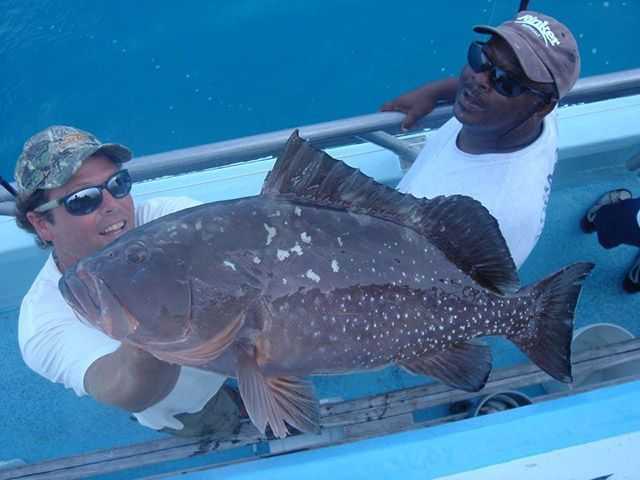[dropcap]A[/dropcap] salty, spring bouquet of many colorful fish species will decorate the near coastal fishing zone-offshore of Stuart in May. Grouper will be the one of the main components in this fishy, floral arrangement, as the seasonal closure of many representatives of the grouper family comes to an end. May 1st opens the strategy window for targeting, catching, and keeping several species of grouper, east of the St. Lucie Inlet. For Florida State regulations see http://bit.ly/1PNrDoQ and for Federal regulations see http://bit.ly/1DDVB7a.
Gag, black, red, and scamp grouper will all be in the cross-hairs this month, as these tasty, bottom dwelling brawlers will be sought after by rod and reel fishermen in depths from 50 to 180 feet of water. 120 feet to 160 feet inevitably becomes the focal point for a “go to zone” when targeting grouper, although trophy fish can be caught in 65 to 85 feet of water regularly. The common thread that runs through all successful grouper fishing is to fish around structure, reefs that set the foundation for the ocean food chain. These reefs harbor baitfish and provide shelter in the form of “holes” or voids in the reef, where grouper like to occupy. Find structure, and you will find fish.
Like many species of fish, grouper are comfortable being opportunistic feeders and will eat a wide array of dead and live baits. Huge diameter mouths, packing an intense suction mechanism allow groupers to eat just about anything smaller than them. Preferred live baits will include greenies (threadfin herring), sardines, cigar minnows, grunts, and pinfish. Dead or cut baits of almost any flavor will work, just keep in mind to match the size of your cut bait to a general size of fish you are targeting. Matching tackle is also important and the tackle needs to be heavy—4/0 to 6/0 class reels spooled with braid from 80- to 200-pound strength is recommended or a reel with mono from 80- to 100-pound will result in the best chance for success. Similarly, strong monofilament leaders from 100- to 150-pound test will be necessary to resist chaffing during the hook up and subsequent battle as the fish initially will swim the tackle through the reef in an effort to escape. Solid, single hooks of 7/0 to 10/0 are crucial, and of course a sufficient amount of lead sinker to find and hold the bottom as grouper typically live very near or on the bottom of the ocean floor around the structure.
While the opening of grouper season will be a highlight for this month, May is also characteristically an excellent month for catching all species of snapper, including large muttons. Big (15 to 25-pound) mutton snapper will begin to move up the reef line from points south and east and find reef haunts relatively close to our inlet in depths of 60 to 80 feet.
May will be the bottom fisherman`s meat hunting dream, come true.
